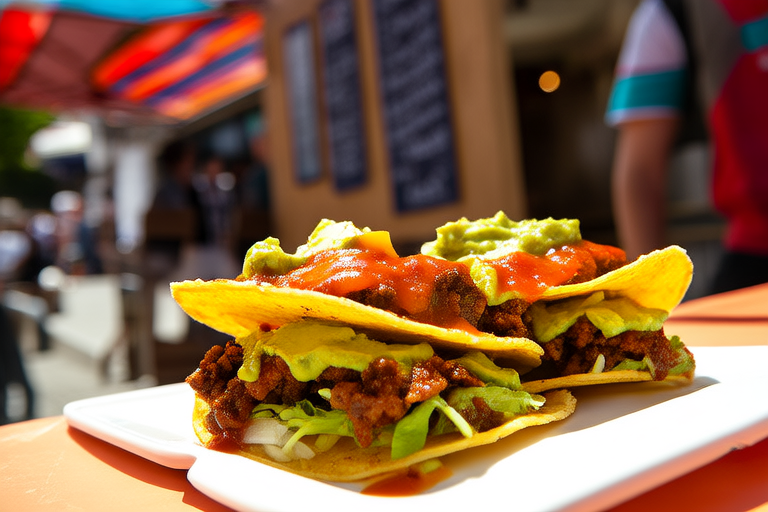Around the Table: Discovering Local Delights Through International Travel

Around the Table: Discovering Local Delights Through International Travel
Introduction
Food is more than just sustenance; it is a gateway to understanding different cultures. Every bite tells a story, reflecting the history, geography, and traditions of a place. Dining at local eateries is essential for truly experiencing a destination, offering insights into the daily lives and values of the people who live there. Whether it’s savoring a fresh plate of pasta in Italy or sampling sushi in Japan, the culinary landscape provides a window into the soul of a nation.
The Power of Local Cuisine
Each region’s culinary offerings are deeply intertwined with its history, geography, and traditions. Italian cuisine, for instance, is renowned for its simplicity and reliance on fresh ingredients. Dishes like pizza and pasta, staples of the Mediterranean diet, showcase the influence of the sea and the fertile plains of central Italy. In contrast, Japanese cuisine emphasizes harmony and balance, with dishes like sushi and ramen highlighting the country’s emphasis on seasonality and sustainability. Similarly, Mexican cuisine, with its vibrant spices and bold flavors, reflects the country’s diverse indigenous heritage and colonial influences.
From the hearty stews of Eastern Europe to the spicy curries of Southeast Asia, local cuisine offers a tangible connection to the land and its people. By exploring these dishes, travelers gain a deeper appreciation for the cultural nuances that shape a destination.
Street Food Adventures
Street food is often the best way to experience the true flavors of a city. These casual eateries offer a glimpse into everyday life, allowing travelers to interact with locals and sample authentic dishes. From the bustling streets of Bangkok to the narrow alleys of Tokyo, street food markets and stalls are vibrant hubs of activity.
In Thailand, visitors can indulge in mouthwatering pad thai and mango sticky rice. In Mexico, tacos al pastor and elote (grilled corn) are must-try items. In Vietnam, pho and banh mi are beloved street foods that provide a taste of the country’s culinary diversity. These humble yet flavorful dishes are often prepared fresh to order, ensuring a truly authentic experience.
Farm-to-Table Experiences
Farm tours and cooking classes offer unique opportunities for travelers to learn about sustainable agricultural practices and traditional recipes. Many destinations now offer guided tours of local farms, where visitors can meet farmers, learn about crop cultivation, and even participate in harvesting. Cooking classes, led by local chefs, allow travelers to immerse themselves in the kitchen, learning how to prepare regional specialties.
For example, in Tuscany, visitors can tour olive groves and vineyards, followed by a hands-on cooking class where they learn to make fresh pasta and artisanal cheeses. In Japan, participants can join workshops focused on preparing sushi or making soba noodles. These experiences not only provide delicious meals but also foster a greater understanding of the cultural significance of food.
Festivals and Feasts
Food festivals around the world celebrate regional specialties and provide a platform for local artisans and chefs to showcase their talents. These events offer a chance to sample a wide range of dishes and beverages, often accompanied by music, dance, and other cultural performances.
One of the most famous food festivals is Oktoberfest in Munich, Germany, where visitors can enjoy traditional Bavarian beer and sausages. In Spain, the Tomatina festival in Buñol features a massive tomato fight, while the San Fermín festival in Pamplona is known for its running of the bulls. In India, the Pushkar Camel Fair is a colorful celebration of Rajasthani culture, featuring camel races, traditional dances, and a variety of local delicacies.
These festivals not only highlight regional specialties but also provide a unique opportunity for travelers to connect with the local community.
Culinary Tourism Trends
Culinary tourism has become increasingly popular, with trends like food trails, pop-up restaurants, and chef-led tours gaining traction. Food trails, which guide visitors through a series of local eateries, allow them to sample a diverse array of dishes in a single day. Pop-up restaurants, often set up in unexpected locations, offer a novel dining experience, while chef-led tours provide an insider’s perspective on local cuisine.
These trends have gained popularity because they offer immersive and personalized experiences, allowing travelers to engage more deeply with the local culture. They also cater to the growing interest in sustainable and ethical eating, with many tours focusing on organic farming and fair-trade practices.
Conclusion
Embracing local flavors is essential for a truly enriching travel experience. By dining at local eateries, participating in farm tours, and attending food festivals, travelers can gain a deeper understanding of the cultural nuances that shape a destination. Whether you’re savoring a bowl of pho in Vietnam or enjoying a plate of paella in Spain, every meal offers a unique opportunity to connect with the local community and its traditions.
We encourage readers to seek out authentic dining experiences wherever they go, as these moments often become some of the most cherished memories of a trip. So, the next time you travel, make sure to leave room in your itinerary for a culinary adventure!